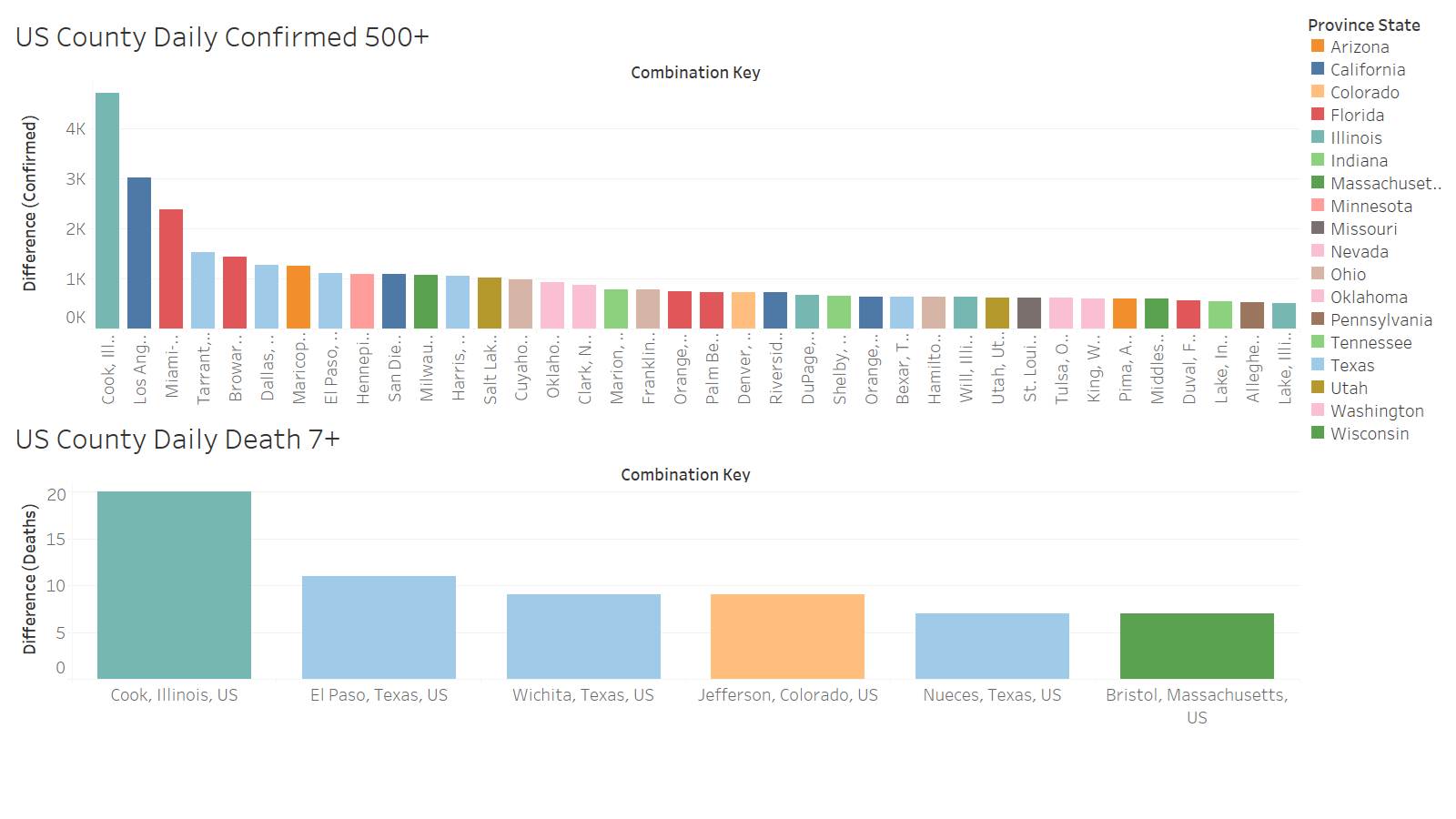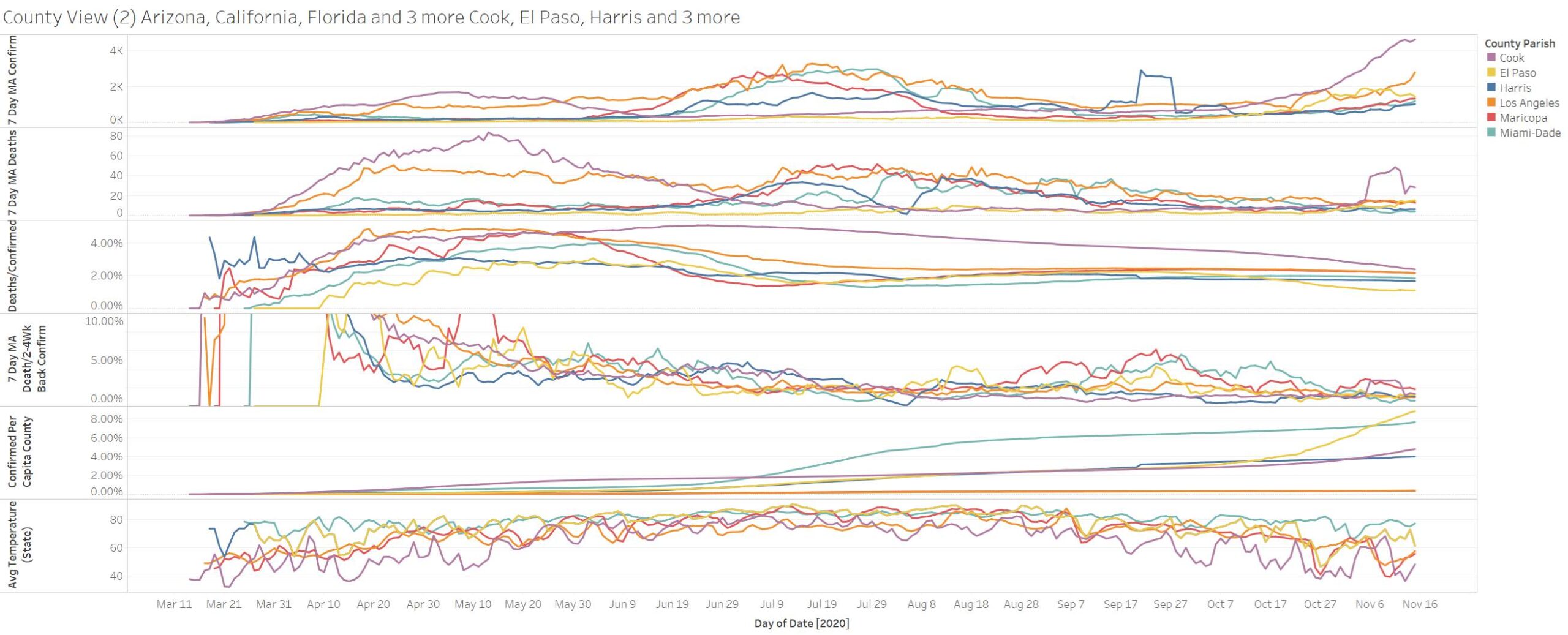Covid19mathblog.com
Another good news – but likely overhyped as the Pfizer test – https://www.bloomberg.com/amp/news/articles/2020-11-16/moderna-vaccine-is-found-highly-effective-at-preventing-covid-19?
“Moderna Inc. said its Covid-19 vaccine was 94.5% effective in a preliminary analysis of a large late-stage clinical trial, another sign that a fast-paced hunt by scientists and pharmaceutical companies is paying off with potent new tools that could help control a worsening pandemic.”
“A preliminary analysis of data from more than 30,000 volunteers showed Moderna’s vaccine prevented virtually all symptomatic cases of Covid-19, the disease caused by the coronavirus, the company said in a statement on Monday.”
“Only five participants who received two doses of the vaccine became sick, compared with 90 coronavirus cases in participants who received a placebo, according to a review by an independent data safety monitoring board appointed by the U.S. National Institutes of Health.”
So if we assume 50% placebo – the sample is 90/15000=%0.6 – which is on the low end of where one would roll out the vaccine. We have over 203 counties with population above 100K that are over 1% per capita. My concern is the demographic was slighted to the younger age spectrum hence lower infection rate – but just speculation given the low infection rate.
The start of covid seems to be earlier than most think per – https://journals.sagepub.com/doi/10.1177/0300891620974755
“We investigated the presence of SARS-CoV-2 receptor-binding domain (RBD)–specific antibodies in blood samples of 959 asymptomatic individuals enrolled in a prospective lung cancer screening trial between September 2019 and March 2020 to track the date of onset, frequency, and temporal and geographic variations across the Italian regions. SARS-CoV-2 RBD-specific antibodies were detected in 111 of 959 (11.6%) individuals, starting from September 2019 (14%), with a cluster of positive cases (>30%) in the second week of February 2020 and the highest number (53.2%) in Lombardy. This study shows an unexpected very early circulation of SARS-CoV-2 among asymptomatic individuals in Italy several months before the first patient was identified, and clarifies the onset and spread of the coronavirus disease 2019 (COVID-19) pandemic. Finding SARS-CoV-2 antibodies in asymptomatic people before the COVID-19 outbreak in Italy may reshape the history of pandemic.”
Interestingly when I wrote about the Covid being found in frozen meat the following article came across my feed – https://unherd.com/2020/11/factory-farming-will-kill-us-all/
This certainly is a food for thought article.
“the Danish mink episode is just one more proof that factory farms are ticking time-bombs of zoonotic disease — those which leap from animals to humans — and petri-dishes of bacterial infections.”
“Our Western arrogance towards animalia is Rene Descartes’ fault, of course. As soon as the Enlightenment philosopher declared that animals were automata, and only humans conscious and deserving compassion, the creatures of the Earth were done for.
If animals are “flesh robots”, ethically they can be as badly treated as you like. Add the generalised disconnect from nature concommitant with the Industrial Revolution, and the table appetites of late capitalism (more meat, please!) you end up with the factory farming of Peppa, Ermintrude and the Little Red Hen, plus the remainder of Old Macdonald’s old-style farmyard. All of them reduced to “units” or “produce” rather than sentient beings.
By definition, a factory farm entails intensive rearing, with the livestock in close proximity, beak to beak, snout to snout. The old rule of farming — the one I was taught by my grandfather — is that “a sheep’s worst enemy is another sheep”. Put another way, any disease or sickness with animals close-packed “whips through the lot like wildfire”, in his words.
The overcrowding of animals in factory farms not only enables easy transmission of disease; according to the European Food Safety Agency, the stress from the overcrowding (often on bare concrete or metal slats), the inability to display normal behaviour compromises the animals’ immune system… which increases their susceptibility to disease. A vicious circle of malady.
The circle of malady can become a spiral of death. Factory animals tend to be genetically similar to each other — clones, effectively — selected for traits such as big breasts or big rumps. Thus, a virus introduced into the herd or flock can run through it without meeting any resistance in the form of genetic variants to prevent its spread.
It is different in the wild, or on farms which practise low-stocking densities. Viruses dislike killing their host, since if the host dies their demise follows. Out in the jungle or on organically-run Welsh hills, say, pathogens do not regularly encounter hosts, so the pathogen has to keep its virulence low — otherwise it runs out of hospitable bodies. But in a shed with 250,000 laying hens the pathogen has a positive embarrassment of hosts, and can go through them like, well, wild fire.
This is why factory farms pose a bigger risk for zoonotic outbreaks than either the natural world or farms using low stocking rates.”
“Between 1997 and 2006, the H5N1 virus — or avian flu — which was transmitted from poultry to humans, achieved a 59% mortality rate among people affected. For comparison, Covid-19’s mortality rate is in the neighborhood of 1%.
Intensive poultry operations are the Manhattan Projects of viral development, and China is replete with them. Starting in the 1990s, as part of its economic transformation, China ramped up its food production systems to industrial scale. There are currently 5.27 billion chickens in China, most of them being farmed intensively.
Almost as nightmarish as avian H5N1 was the H1N1 swine flu which emerged from multiple viral gene “reassortment events” in farmed pigs in North America in 2009, before jumping to humans. The Swine Flu pandemic went global, killing between 151,700 and 575,400, before being suppressed at great cost.
In June this year a new strain of swine flu, similar to the one that caused the 2009 episode, was identified in China. Named G4 EA H1N1, it possesses “all the essential hallmarks of a candidate pandemic virus”, according to the authors of one scientific paper.
None of these near-misses have stopped the continual industrialisation of farming in the world’s most populous country. The latest pig farms in China are multistoried, with 1,270 pigs per floor, and over 90% of the meat on China’s plate comes from factory farms.
And so China lurches from pandemic to pandemic: H7N9 avian flu; Covid-19; H1NI. African Swine Fever…
It is not just the mutant viruses manufactured in factory farms that are the stuff of bad dreams. The other pandemic risk associated with factory farms is from highly drug-resistant bacterial pathogens. Industrial farms are heavily reliant on antibiotics, both as prophylactics and as therapeutics. Overuse of these antibiotics causes bacteria to evolve, with those that mutate to survive the antibiotic becoming more dominant. Worldwide it is estimated that 73% of all antibiotics are used in farm animals. (In the UK the figure is about 30%.) According to leading authorities such as the European Medicines Agency and the WHO, the overuse of antibiotics in farming contributes to higher levels of antibiotic resistance in some human infections.
This is more serious than most people understand, and already, every 15 minutes, one person in the US dies because of an infection that antibiotics can no longer beat. The post-antibiotic era is already here, and it will get worse. Small wonder then, that the Food and Agriculture Organisation of the United Nations says that “Livestock health is the weakest link in our global health chain.””
“Presently, one billion pigs, three billion ducks and 69 billion chickens (the three most commonly killed terrestrial animals in the world) are slaughtered annually to meet the demand for meat.
So we are not going to give up meat as a species, but as a matter of growing urgency we need to de-intensify and deindustrialise the livestock industry. It is not just humans who need to socially distance; we need to give the animals some space, and outdoors. The consequences if we don’t act soon could be truly catastrophic.”
This is the stuff of apocalyptic movie themes.
No country over 1K
Texas lead in death and IL and FL had over 10K confirmation
Cook county IL leads the US with confirmations and death
LA is rising again and almost back to the summer peak of confirmations per day
France numbers have significantly dropped





